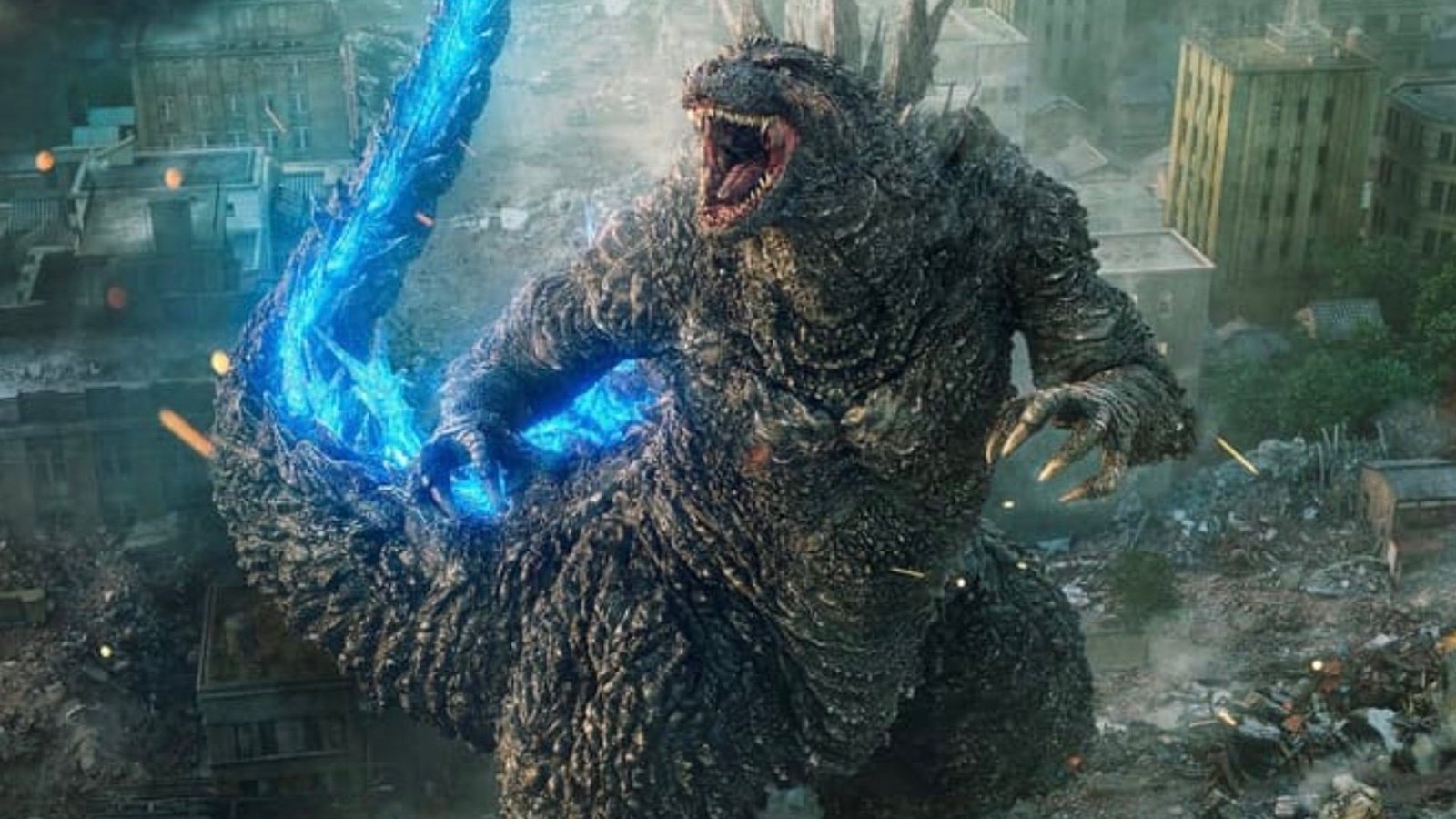When it comes to legendary monsters that have captivated audiences worldwide, few can rival the iconic status of godzilla -1. First appearing on the silver screen in 1954, Godzilla has become a cultural phenomenon, transcending its origins as a Japanese film to become a global icon. This towering behemoth has not only entertained but also offered commentary on societal fears, environmental issues, and the human condition. In this comprehensive exploration, we delve into the origins, evolution, and enduring legacy of godzilla -1, examining its impact on popular culture and its significance in both cinematic and social contexts.
Godzilla: The Birth of a Monster
The Origin Story
The film serves as an allegory for nuclear destruction, with godzilla -1embodying the destructive power of atomic weapons. This connection to real-world events gave the monster a profound depth, making it more than just a creature feature but a poignant reflection on the consequences of human actions.
Cinematic Techniques and Special Effects
The original “Gojira” film employed groundbreaking special effects techniques for its time. Eiji Tsuburaya, the special effects director, used a combination of suitmation (an actor in a monster suit) and miniature sets to bring Godzilla to life. This approach not only gave the monster a unique, tangible presence but also allowed for a level of detail and interaction with the environment that was unprecedented. The use of practical effects has remained a beloved aspect of the Godzilla franchise, even as it has evolved with modern CGI technology.
Evolution of godzilla -1 Over the Decades
The Showa Era (1954-1975)
The Showa era marks the first wave ofgodzilla -1 films, characterized by their campy charm and evolving portrayal of the monster. Initially a terrifying force of nature, Godzilla gradually became a more heroic figure, often defending humanity from other monstrous threats. This period saw the introduction of iconic adversaries like King Ghidorah, Mothra, and Mechagodzilla, establishing Godzilla’s role as the king of the monsters.
The Heisei Era (1984-1995)
In the Heisei era, godzilla -1 returned to its darker roots. The films during this period are known for their more serious tone and complex storylines. The creature was portrayed as a tragic figure, a victim of humanity’s hubris and a constant reminder of the dangers of nuclear technology. The special effects also saw significant advancements, with more sophisticated suit designs and the incorporation of animatronics and CGI.
The Millennium Era (1999-2004)
The Millennium era brought a mix of nostalgia and innovation. These films often served as direct sequels to the original 1954 movie, ignoring the continuity of previous eras. This approach allowed for creative freedom in storytelling and character development. The series continued to experiment with special effects, blending traditional techniques with digital effects to enhance the visual spectacle.
The Reiwa Era (2016-Present)
With the advent of the Reiwa era, godzilla -1 has seen a resurgence in popularity. The 2016 film “Shin Godzilla” reimagined the monster in a contemporary context, addressing modern fears such as government ineptitude and disaster response. This film, directed by Hideaki Anno, received critical acclaim for its innovative approach and striking visual design. The success of “Shin Godzilla” has paved the way for new interpretations and adaptations, ensuring the longevity of the franchise.
Cultural Impact and Symbolism
godzilla -1 as a Metaphor
Godzilla’s significance extends beyond its cinematic presence. The monster has become a powerful symbol of various social and political issues. Its origins as an allegory for nuclear destruction have expanded to encompass themes of environmentalism, with later films highlighting the consequences of pollution and climate change. Godzilla’s resilience and adaptability also reflect the human capacity to endure and overcome adversity, making it a timeless emblem of both fear and hope.
godzilla -1 in Pop Culture
The influence of Godzilla on popular culture is vast and far-reaching. The monster has appeared in numerous films, television shows, comic books, and video games. It has inspired a plethora of merchandise, from action figures to apparel, cementing its status as a cultural icon. Godzilla’s roar, a distinctive and instantly recognizable sound, has become synonymous with the character, further embedding it in the collective consciousness.
International Appeal and Adaptations
While Godzilla is inherently a product of Japanese culture, its appeal has transcended national boundaries. The monster’s universal themes and thrilling action have resonated with audiences worldwide, leading to various international adaptations. Notably, Hollywood has produced several Godzilla films, starting with the 1998 version and more successfully with the recent MonsterVerse series, including “Godzilla” (2014), “Godzilla: King of the Monsters” (2019), and “Godzilla vs. Kong” (2021).
Godzilla: The Legacy Continues
Future of the Franchise
The future of godzilla -1 looks promising, with new projects and collaborations on the horizon. The MonsterVerse series continues to expand, promising more epic battles and intricate world-building. Meanwhile, Toho, the original studio behind Godzilla, remains committed to producing new content that honors the monster’s rich legacy while exploring fresh and innovative narratives.
Godzilla’s Enduring Relevance
Godzilla’s enduring relevance can be attributed to its ability to adapt to changing times and societal concerns. From its origins as a metaphor for nuclear annihilation to its current role in addressing contemporary issues, Godzilla remains a potent symbol with a timeless appeal. Its story is one of resilience, transformation, and the unending struggle between humanity and nature.
Conclusion
Godzilla, the king of the monsters, has captivated audiences for over six decades with its awe-inspiring presence and profound symbolism. From its origins as a cautionary tale about nuclear destruction to its current role in addressing contemporary issues, Godzilla remains a powerful and enduring figure in popular culture. As the franchise continues to evolve and expand,
FAQs
What inspired the creation of godzilla -1?
The creation of Godzilla was inspired by the atomic bombings of Hiroshima and Nagasaki, serving as an allegory for nuclear destruction and the devastating consequences of human actions.
How has Godzilla evolved over the years?
Godzilla has evolved from a fearsome monster representing nuclear devastation to a more complex character, sometimes depicted as a hero. This evolution reflects changing societal concerns and advancements in special effects technology.
What are some of godzilla -1 most famous adversaries?
Some of Godzilla’s most famous adversaries include King Ghidorah, Mothra, Rodan, and Mechagodzilla. These monsters have become iconic in their own right, contributing to the rich mythology of the franchise.
Why is godzilla -1 considered a cultural icon?
Godzilla is considered a cultural icon due to its enduring popularity, significant impact on popular culture, and its role as a symbol of various social and political issues. Its distinctive appearance and roar have made it instantly recognizable worldwide.
What are the main themes explored in godzilla -1 films?
The main themes explored in Godzilla films include the dangers of nuclear technology, environmentalism, the consequences of human hubris,
What does the future hold for the godzilla -1 franchise?
The future of the Godzilla franchise looks bright, with new films and projects in development. The MonsterVerse series continues to expand, and Toho remains dedicated to producing innovative and engaging content that honors Godzilla’s legacy.





